The numbers are in for the perfume industry’s sales in 2013 as a whole. In Part I, I covered the U.S. market, but this time, I’m going to look at the global perfume industry, from sales in various countries, any trends that may crop up, and the astonishing financial forecast for 2018. I’ll also talk about the degree of profits in 2013 for L’Oreal, LVMH, Givaudan, and IFF. Then, I’ll look at the international picture: from a perfume Fatwa from a Grand Mufti in the Middle East (yes, I’m being serious), to Valentine’s day in the U.K.; from best-selling fragrances in France and the companies which dominate that sector, to those in Germany. I’ll also briefly examine the perfume industry in Italy, the Netherlands, Spain, and India.
As always, I would like to emphasize that I am the furthest thing imaginable from a financial expert. Also, please note, that all of the articles focus on the more established and significantly larger commercial fragrance market, not the niche one.
THE GLOBAL PERFUME INDUSTRY & ITS FUTURE VALUE:
The global perfume industry is generally valued at around $28 billion (based on a 2012 report) per year, and Elizabeth Arden’s Wiki-Invest page states that the industry has a market cap at $36.6 billion dollars. I believe that means that most people cap the perfume industry’s future worth at around $36 billion. And, in fact, that is the usual number that I’ve read when people are calculating how much the industry will be worth in 2017 or 2018.
A more recent report says it’s going to be far, far bigger than that. Perfumer & Flavorist cites a 2013 study by Global Industry Analysts which says the industry will “reach about $45.6 BILLION dollars in 2018,” a mere 4 years time! Unfortunately, the P&F article is not written in a very readable, straight forward manner, and, more importantly, they bury the lede, so I’ll turn your attention to a more useful source which makes it clear that it is (alas) celebrity fragrances that are really expected to drive the overall surge to a $45.6 billion dollar a year business.
Companies and Markets states it boldly in its headline: “Global perfume market driven by the demand for celebrity inspired scents“:
The global perfume market has been forecast to reach a value of approximately US$45.6 billion by 2018, driven primarily by growth expected in the underpenetrated emerging markets and innovative product launches. [¶]
The market is set to benefit from the growing trend towards consumer urbanisation, higher spending propensity and the heightened importance on personal appearance and grooming. In addition, increased demand for youth-oriented, floral and exotic fragrances and celebrity perfumes will set the pace for rapid market expansion.
Perfumes today have evolved into a mainstream business in the cosmetics, and personal care industry. From being non-essential and frivolous, perfumes have emerged as essentials, owing to the increasing trend of appearance and personal care becoming part of pride, self reliance, and confidence.
No longer considered as an extravagant grooming accessory, perfumes have metamorphosed into a “feel good” factor, which complements the consumer’s need for expressing individuality, and personal style. The wide range of themes and choices enable consumers to choose fragrances that complement respective personal and characteristic traits.
Dictated by the fickle trends of haute fashion, the world of perfumes is beginning to witness the entry of new apparel designers, and pop, music, and movie superstars making a dent on the market. The demand for celebrity inspired scents shows no signs of abating, thanks to the increasing number of celebrity fragrances hovering in the market.
The perfume industry is primarily consumer driven. Consumers have a unique cultural attitude to “fragrance” and an uncritical concept of possessing a certain kind of identity through wearing fragrance.
Currently on the global radar are low penetration markets such as China, and Japan, where huge untapped opportunities are the focus of large international players. Fine perfumes are increasingly looking at the teenage segment as a potential growth market. Women’s fragrances continue to dominate the market, with a maximum number of product launches and innovations aimed at the fairer sex.
The scenario is however set to change with men’s fragrance segment beginning to witness strong growth patterns, as the importance of grooming tops the list of men’s priorities. Typically, the men’s market was confined to the after-shave fragrances, but today the cards are being turned and men’s fragrances for specific occasions are witnessing huge growth, holding the promise of emerging into a mainstay market.
L’OREAL & LVMH:
L’Oreal reported its earnings on February 10th, but, try as I might, I cannot find the fragrance figures in the tsunami of information for the beauty industry leader. For once, even I was overwhelmed by the details! If I spent a few days on the shareholder reports, I know I could find it, but I lack the motivation. Suffice it to say that the company posted record earnings as a whole for 2013 in almost all its global markets. The exceptions seemed to be Japan, China, and India where sales were less substantial, while the South Korean market was depressed. Either way, I suspect that fragrances constitute only a microscopic portion of their revenues, even if they do own YSL fragrances and Armani perfumes.
According to a New York Times report, LVMH did not do so well in 2013, but, again, it is impossible to find specific details on perfume sales or revenue. In addition, LVMH doesn’t seem to release revenue figures for its individual companies, so it may not be possible to know how Guerlain and Dior fared last year. What the newspaper does report is LVMH’s bottom line:
its profit was almost flat last year amid flagging demand for some of its core fashion brands in key markets like China and the impact of weaker currencies in its main overseas markets. [¶] LVMH … recorded a net profit of 3.4 billion euros, or $4.6 billion, for the year to Dec. 31, up just 0.4 percent from 2012.
While this post is supposed to talk about the perfume industry, I have to partially digress for a moment to talk about LVMH’s luxury sales in general. The article has an utterly fascinating reference to what seems like a backlash against Louis Vuitton’s gaudy, overly loud new bags. (Okay, it only says — quite diplomatically — that they aren’t “subtle,” but I find them to be gaudy, not to mention cheap-looking. They weren’t always that way.) The NY Times also talks about how LVMH is trying to deal with some of its problems by appealing to the super-rich, but it’s not having a lot of luck in China where sales are flagging. Given the role of LVMH in the perfume industry through its ownership of Guerlain and Dior, I thought you might find it interesting to know how they are faring in general.
Some excerpts from the NY Times report:
Revenue grew 4 percent, to €29.1 billion, a sharp decline from the double-digit increases seen in previous years [due to unfavorable exchange rates and currency conversion charges]. […][¶]
Both Kering — the French company formerly known as PPR, whose brands include Gucci, Bottega Veneta and Yves Saint Laurent — and Prada of Italy also cited unfavorable exchange rates as contributing to weaker sales in the third quarter. [¶]
Louis Vuitton, which accounts for more than two-thirds of [LVMH’s leather] division’s sales, has suffered recently as many high-end consumers have begun to shun its familiar logo-emblazoned handbags for subtler products. To compensate, LVMH has increased its investment in smaller brands like Fendi, Céline and Berluti.
Faced with a protracted economic downturn in Europe and slowing growth in important emerging markets like China, Louis Vuitton, like its rival, Gucci, has sought to jump-start sales by repositioning itself even further upmarket, pursuing superrich clients, rather than the merely rich. [¶]
Revenue at the perfumes and cosmetics business, which includes brands like Guerlain and Loewe, rose 3 percent to €3.7 billion. Watch and jewelry sales fell 2 percent to €2.8 billion, reflecting in a slowdown in China, where a government crackdown on giving lavish gifts has crimped sales.
Specialized retailing activities, including the Sephora cosmetics chain and Duty Free Shops, recorded strong growth, buoyed by a surge in tourism spending, particularly by Asian travelers. [Emphasis added by me.]
As a side note, I found nothing detailing Chanel‘s sales or revenues in 2013. The company is privately owned, so it has no need to release official figures. However, I did find Hermès 2013 annual report. The company’s core business of luxury goods is doing astonishingly well, particularly in Asia (in contrast to LVMH, it would seem). But Hermès also sells fragrances, and those were quite successful in 2013:
Perfumes (+15%) confirmed their momentum in 2013. The new fragrance for women Jour d’Hermès was warmly welcomed whilst Terre d’Hermès continued its growth and established its position as a classic male fragrance. [Emphasis to names added by me.]
GIVAUDAN:
While the EU moves slowly to restrict natural perfume ingredients to draconian levels, Givaudan — the maker of aromachemical synthetics and one of the big backers of IFRA — is raking it in.
For those of you unfamiliar with the name, Givaudan is a Swiss company founded in 1895. According to its Wikipedia page, it is reported to be the largest company in the world producing fragrance ingredients and flavours. It controls 25% of the market share, as “the company’s scents and flavors are developed most often for food and beverage makers, but they are also used frequently in household goods, as well as grooming and personal care products.” In 2011, Givaudan had sales of 3.9 billion Swiss Francs with an overall market share of 25%. “It is one of Switzerland’s 30 biggest listed companies in terms of market capitalization[.][…] The company has a leading presence in all major markets and operates through a network of more than 40 subsidiaries” in established and emerging markets.
And it had a great year in 2013. RTT News provides Givaudan’s full-year report, starting with the fact that its annual income climbed to “490 million Swiss francs ($546.6 million) from 410 francs in the prior year.” In addition:
- Gross margin increased to 44.7 percent from 42.4 percent.
- Fragrance Division sales rose 3 percent to 2.083 billion francs and increased 5.1 percent on a like-for-like basis. Fine Fragrance witnessed strong growth in Latin America, while Consumer Product saw strong performance in developing markets.
INTERNATIONAL FLAVORS & FRAGRANCES (IFF):
Givaudan may control 25% of the global fragrance and flavouring market, but IFF is definitely a powerful force in the field. And it, too, did well in 2013. According to Perfumer & Flavorist, IFF’s
- full-year 2013 local currency sales increased 5% to $3 billion, reflecting 10% growth in emerging markets and 2% growth in the developed markets. Reported net income for the full year totaled $353.5 million.
- Emerging markets grew 10% last year, accounting for 49% of sales.
- The fragrances business unit reported that revenue for the full year increased 6% to $1.5 billion. The fragrances segment contributed 52% of the company’s consolidated revenue in 2013, up from 51% in 2012. Local currency sales increased 6% for the full year, supported by double-digit growth in Greater Asia and Latin America and solid growth in EAME. [Me: I think “EAME” refers to the Middle East and East Asia.]
For the 4th Quarter in specific, the article states that
- IFF fourth quarter 2013 revenue increased 7% to $725 million compared to the prior year. A full 50% of consolidated IFF sales were achieved in emerging markets, according to the company.
- The fragrance unit reported that revenue increased 8% to $382 million in the fourth quarter of 2013 compared with $354 million in the fourth quarter of 2012.
- Fine fragrance and beauty care achieved 9% local currency sales growth, due to strong growth in fine fragrance owing to strong new business wins in EAME.
- Fragrances gross margins improved over the prior year quarter primarily due to moderating input costs and other strategic initiatives including mix, innovation and cost reductions. Segment profit increased 16%, or $9 million, to $62 million in the fourth quarter of 2013 compared with $53 million in the fourth quarter of 2012.
In short, emerging markets and the Middle East are responsible for the surge in sales. I will jest, and say that IFF’s invention, ISO E Super, probably helped as well, judging by how many bloody fragrances contain the damn thing. (No, it’s not actually paranoia if they really are out to get you. 😉 But, in any event, I’m merely joking to alleviate any numbness you may feel at this point from all these details.)
THE U.K. FRAGRANCE MARKET:
Fragrance sales in the U.K. rose 9.3% in 2013, boosted by the fortnight before Valentine’s Day 2013 during which there were £32 million value sales and 1 million units sold. The numbers come from NPD, as quoted by Premium Beauty News. Apparently, the two weeks before Valentine’s Day are a huge deal in the UK, though not as much as in the U.S. where the day accounts for 4% of perfume sales. The article reports:
“Valentine’s fortnight remains a key focus for prestige beauty products, with fragrance representing 2.7% of annual fragrance value sales and 3% of total beauty sales in the UK – beating both Father’s Day and Mother’s Day sales,” says The NPD Group.
The market research firm notes there is an opportunity for growth in the UK fragrance market when comparing sales in other key markets. “In France and the United States, 2013 Valentine’s fragrance sales represented 4% of annual fragrance value sales, generating just over £67 million and £81 million, respectively.” [¶]
Trend data reveals that while fragrance sales peak around Valentine’s Day, at 42% of prestige beauty products sold based on 2013 figures, sales are less concentrated at this time of year compared to Christmas.
Men were spending away as well:
“Men look set to be the winners in the fragrance stakes this year if the 2013 trend continues, with men’s fragrances for Valentine’s 2013 representing 35% of all fragrance value sales – up from 33% in 2012,” points out The NPD Group.
However, it seems that everyone was after less expensive fragrances for the most part:
Data from Valentine’s 2013 reveals that consumers may become more price conscious with their fragrance purchases. On average, both women’s and men’s fragrance sales were down £1-2 on the annual average price at £33 and £31, respectively. Leftover Christmas gift sets were also popular for Valentine’s 2013 in the UK.
In terms of the best-selling perfumes in the U.K, I found a list dating back to 2009. It comes from the Daily Mail which makes me cautious as to its accuracy, but there really isn’t else that I found on the subject. The newspaper states that it “asked Britain’s top department stores which scents fly off their shelves the fastest – the results were unanimous…”
- Chanel No. 5
- Calvin Klein Eternity
- Prada Eau de Toilette
- Davidoff Cool Water
- Gucci Rush
- Ralph Lauren Romance
- Sarah Jessica Parker Lovely
- Issey Miyake L’Eau d’Issey
- Estée Lauder Beautiful
- Tom Ford Black Orchid
THE FRENCH PERFUME MARKET:
According to the Perfumer & Flavorist, “France’s fragrance market [is] the second most important sector in the country’s health and beauty industry.” The Euromonitor research group calls it is an extremely competitive market, and provides a fascinating breakdown of the market share of the three market leaders, Chanel, Dior, and Guerlain (in that order):
Fragrances is fragmented, with more than 40 different players operating in the category. Amongst them, the leading companies are Chanel, Parfums Christian Dior and Guerlain, with 12%, 11% and 8% value shares respectively in 2012. These three operators offer several well-recognised premium fragrances for women and men, which are well-positioned in the market. Chanel N° 5 from Chanel and J’adore from Parfums Christian Dior, for example, were the leading brands in premium women’s fragrances in 2012. These two popular fragrances are constantly promoted on television. Over the years, these three players have been able to maintain their leading positions thanks to important investment in advertising, but also due to some product and packaging innovation. [Emphasis to names added by me.]
Even if the Big Three control the greatest portion of the market, they don’t necessarily have the best-selling perfumes in France. In fact, Chanel No. 5 isn’t even on French Sephora’s 2014 list of top sellers, a list which obviously has to be based in large part on prior sales in 2013. That list, as provided by the French-based blog The Scented Salamander, is as follows:
Sephora
1 – Invictus by Paco Rabanne
2 – La Petite Robe Noire EDP by Guerlain
3 – La Vie est Belle EDP by Lancôme
4 – J’Adore EDP by Dior
5 – Shalimar by Guerlain – (boosted by sales price)
6 – 1 Million EDT for men by Paco Rabanne
7 – Flowerbomb EDP by Viktor & Rolf
8 – Si by Giorgio Armani
9 – Le Mâle EDT by Jean Paul Gaultier
10 – Boss Bottled EDT by Hugo BossInvictus for men and Si for women, a fruity chypre, are two 2013 entries and have already reached the top.
For the beauty chain, Marionnaud, which features a more “mature” clientele and an “atypical” dated lineup, their list of best sellers for 2014 is even more different. The Scented Salamander reports:
Marionnaud
1 – Boucheron Femme EDP by Boucheron
2 – Flowerbomb EDP by Viktor & Rolf
3 – Alien EDT by Thierry Mugler
4 – Féminité du Bois by Serge Lutens
5 – Eau Sauvage EDT by Dior
6 – Magie Noire EDT by Lancôme
7 – Chloé EDP by Chloé
8 – 1 Million EDT for men by Paco Rabanne
9 – Only the Brave EDT by Diesel
10 – 0 de Lancôme EDT by Lancôme
The lists are interesting, especially when you compare to what was selling back in prior years. Surrender to Chance lists what it says were the best-sellers in France for 2011:
- Chanel No. 5 EDP – “iconic decades-old perfume that has topped the best-seller list for most of those decades.”
- Dior J’Adore – “now overtaking Chanel no. 5 worldwide[.]”
- Thierry Mugler Angel
- Chanel Coco Mademoiselle
- Kenzo Flower
- Guerlain Shalimar EDP
- Lolita Lempicka
- Christian Dior Miss Dior Cherie
- Nina Ricci Nina
- Yves Saint Laurent Paris
- Yves Saint Laurent Opium
- Jean Paul Gaultier Classique
- Lancome Tresor EDP
- Nina Ricci L’air du Temps
- Clinique Aromatics Elixir
- Lancome Cuir de Lancome.
Going back further, Marie-Claire magazine has a listing of the most successful fragrances in 2008 in France, as compared to the U.S. and China at roughly the same time:
FRANCE
1. Chanel No. 5
2. Thierry Mugler Angel
3. Dior J’adore
4. Kenzo Flower
5. Lolita Lempicka 1er ParfumUNITED STATES (2006)
1. Estee Lauder Beautiful
2. Chanel No. 5
3. Donna Karan Cashmere Mist
4. Estee Lauder Pleasures
5. Calvin Klein Euphoria
CHINA (FIRST HALF OF 2007)
1. Chanel No. 5
2. Dior J’adore
3. Lancôme Miracle
4. Chanel Chance
5. Dior Addict 2
I don’t think you can look at the 2014 Sephora and Marionnaud lists as being completely representative of French sales as a whole. There are a variety of reasons. First, Sephora’s clientele generally skews younger and towards a certain financial bracket, while Marionnaud’s doesn’t seem representative for other reasons. (I’ve been in their stores, and The Scented Salamander is correct in saying that they skew extremely old and their merchandise really is dated.) Plus, how can you take figures from 2 chains to be representative of the country as a whole? At best, their lists may demonstrate a gradual shift amongst certain groups away from the classics and the market leaders. Moreover, I find it difficult to believe that Chanel No. 5 and Dior’s J’Adore would lose their many years-long death grip if you looked at numbers from all vendors and across all segments of the population.
Regardless of what fragrances are the most popular, French consumers are buying less of them and reducing their spending in an effort to save more money. The Perfumer & Flavorist has the details of market research by a company called Canadean, but there is a lot of gobbledygook about Compound Annual Growth Rate (CAGR) which hurt my head, so I’ll just give you the summation as I understood it:
- France’s perfume market showed only the seventh fastest growth rate out of the nine health and beauty markets that Canadean follows. The reason is the very high personal saving levels in France at 15.5%, as compared to the average 2.5% rate in the United States.
- French fragrance is forecasted to show much slower growth until 2017. Women’s perfumes dominate the sector with a value share of 62.8% and volume share of 65%. It is expected to show the strongest growth in the upcoming years, especially as compared to men’s fragrances.
- “Men’s fragrances made up less than half the volume of the market in 2012, at 31.7% volume and a slightly higher value of 33.8%. In growth terms, 2012–2017 is projected to see volume and value for men’s fragrances significantly lower than both sector levels and female fragrances[.]”
- The third category, unisex fragrances, recorded just over 3% of the sector for both value and volume of sales in 2012, and its growth is projected to be even lower than that of men’s fragrances at 0.2% in the upcoming years.
In other words, the main buyers of perfume in France now and for the next 4 years are women. Yet, even they are buying less these days, and they’re certainly not buying unisex fragrances in large quantities or buying enough to drag France’s perfume industry out of 7th place from the 9 big markets that the research group follows.
ITALY & THE NETHERLANDS:
Italy doesn’t have a booming perfume market right now, and won’t for the ostensible future. According to Canadean as reported by Perfumer & Flavorist, the sharp drop in Italy’s GDP since 2007 means their perfume sector won’t see growth rates above 2% growth until 2017. Women’s fragrances take up 60% of the market in terms of sales, but they are forecasted to have the slowest growth. Men’s fragrances are expected to perform slightly better but the real surprise pertains to unisex fragrances. They are expected to do the best in the upcoming years, even though they have a much lower market share, with 1.5% for both value and volume in 2012.
The Netherlands may be a small country, but they have a great economy on average. According to Digital Journal, back in 2008, the Netherlands had the 16th largest economy in the world, and ranked 10th in GDP per capita. It reported that fragrance sales were booming in the “600-million Dutch perfume market” which was dominated first by the Douglas chain of shops, then by those of Ici Paris XL perfumeries. If you fast forward to 2013, a report by the Euromonitor states that Dutch perfume sales continued to increase, despite a difficult economy, but the research group saw only modest growth lying ahead. It adds:
L’Oréal (NBO: Prestige & Collections Nederland) is the leader in fragrances with a 12% value share in 2012, with some of its popular brands including Trésor, Acqua di Giò, Ralph Lauren and Emporio Armani. In 2012 the company registered a very small decline in terms of value sales, but overall it had a stable market share. [Emphasis in bolding added by me.]
As noted above, one of the top beauty chains in the Netherlands is Ici Paris XL, and they have a list of their Top 10 Bestsellers amongst female fragrances. The same caveats that I raised for the French Sephora list applies here, too, but it’s still interesting to see what is selling in each country. So, here are their top-sellers:
- Lancome La Vie est Belle
- Chanel Coco Mademoiselle
- Dior J’Adore
- Paco Rabanne Lady Million
- Chanel No. 5
- Thierry Mugler Alien
- YSL Manifesto
- Jil Sander Sun
- D&G The One
- Cacharel Noa
 Their list of Top 10 Men’s Fragrance Bestsellers is:
Their list of Top 10 Men’s Fragrance Bestsellers is:
- Paco Rabanne One Million EDT
- Chanel Allure Sport EDT
- Jean-Paul Gaultier Le Male
- Chanel Bleu de Chanel
- Giorgio Armani Acqua di Gio
- Hugo Boss’ Boss
- Dior’s Dior Homme EDT
- YSL l’Homme
- D&G The One
- Davidoff Cool Water
GERMANY & SPAIN:
Germany has a large fragrance market, and it did well in 2012. According to a September 2013 report by the Euromonitor,
- Fragrances in Germany experienced a positive performance in 2012, with retail current value growth of 2%, reaching €2.0 billion. Volume growth of fragrances in Germany only increased by 1%, which was lower compared with 2011. This was due to the poor volume performance of unisex fragrances in both the mass and premium segments.
- Procter & Gamble Prestige Beauté was the leading player in fragrances in 2012, with a 17% value share. The company is strong in both mass and premium fragrances. In the mass segment Procter & Gamble Prestige Beauté markets a broad range of established brands, such as Mexx Woman. In premium fragrances it has a significant presence with popular brands such as Gucci Guilty Pour Homme and Boss Woman. The company managed to maintain its strong position thanks to well-supported new product launches in 2012.
- Fragrances in Germany is expected to see a rather negligible growth to reach €2.1 billion in 2017. It is expected that the living standards of German consumers will start to slowly decrease in response to the economic crisis, which will limit the growth rate of fragrances to a certain extent in constant value terms. [Emphasis added by me.]
One of the biggest perfume chains in Germany is Parfumerie Douglas or Douglas. According to a Basenotes discussion, in 2004, Douglas announced that its top-selling women’s fragrances were:
1. D&G Light Blue
2. Pure by Jil Sander
3. Lacoste pour Femme by Lacoste
4. Chance by Chanel
5. Touch of Pink by Lacoste
6. Jean Paul Gaultier by Jean Paul Gaultier
7. Pure Poison by Dior
8. Chanel No 5 by Chanel
9. Hugo Deep Red by Hugo Boss
10. L’Eau d’Issey by Issey Miyake
Exactly 10 years later, now, in 2014, only two of those scents remain on Douglas’ new list of its top-selling women’s fragrances. They are Lacoste and Chanel No. 5:
- Thierry Mugler Alien
- Chanel Coco Mademoiselle
- Lancome La Vie est Belle
- Chanel No. 5
- Paco Rabanne Lady Million
- Toni Gard Honey
- Lacoste Lacoste Pour Femme
- Escada Born in Paradise
- Giorgio Armani Si
- Dior J’adore
Douglas’ list of its current best-sellers for men is:
- Hugo Boss’ Boss
- Paco Rabanne One Million
- Jean-Paul Gaultier Le Male
- Davidoff Cool Water
- Paco Rabanne Invictus
- Chanel Allure Homme Sport
- Giorgio Armani Code Homme
- Hermès Terre d’Hermès
- Chanel Bleu de Chanel
- Hugo Boss Hugo
Finally, a brief look at Spain. It may be one of the countries most affected by the Eurozone crisis, but the Perfumer & Flavorist reports that Spanish consumers, particularly men, like to treat themselves to fragrance. The market is “set to be one of the five fastest growing health and beauty sectors in Spain to 2017.” Men’s fragrances will display the highest volume growth through 2017. “As the women’s fragrances category matures, women’s fragrance is predicted to become the slowest growing category of the sector over the next five years[.]” Unisex perfumes, in contrast, will do the best over the next five years, even though they have the smallest market share at this moment.
THE MIDDLE EASTERN MARKET:
A Fatwa was issued by a Grand Mufti in the Middle East on the issue of perfumery, and no, I’m not being facetious. It was actually a positive edict, according to the Euromonitor. Its October 2013 summary report states that:
A Fatwa was issued in June 2012 by Dr Ali Ahmed Mashael, Grand Mufti at the Department of Islamic Affairs and Charitable Activities in Dubai. This stated that Muslims can use alcohol-based fragrances, due to the proportion of alcohol in fragrances being low. While the Fatwa stated that cautious Muslims could use oil-based fragrances that are alcohol-free, it also stated that the use of alcohol-based fragrances would not affect the purity of a Muslim’s prayers. This Fatwa thus encouraged many Saudi consumers to expand their purchase of fragrances to include alcohol-based fragrances from prestigious global brands such as Estée Lauder’s Tom Ford or DKNY. [Emphasis to names added by me.]
I really hope the Euromonitor is the one providing those brand examples, and that the Grand Mufti did not personally mention DKNY! I can’t read the full report unless I pay $725 — which I most certainly do not want to do — so we shall just have to rely on the Euromonitor’s synopsis.
They also mention Arabian Oud, writing “Arabian Oud defines traditional Saudi fragrances for many consumers and was the clear leader in fragrances throughout the review period. The company accounted for 34% share in 2012. This company benefits from its history and its strong premium image.”
Arabian Oud also comes up in the Euromonitor’s report on the fragrance market in the United Arab Emirates, and I found the mention of private agarwood plantations to be fascinating:
- There is a strong tradition for fragrances in the United Arab Emirates, with local men and women using perfumes on a daily basis. The country is particularly known for its oud-based fragrances and benefits from the strong presence of premium oud specialists such as Arabian Oud Co and Ajmal International Trading Co LLC. While oud is expensive and rare, being more expensive than gold, these players have their own agar plantations, enabling them to offer premium quality products at a profit. […]
COMPETITIVE LANDSCAPE
- The leading players in fragrances perfectly represent the dual nature of this category. Traditional oud specialist Arabian Oud Co remained the leading player, accounting for a 14% value share thanks to a wide range of both oriental and Western-style fragrances and opulent outlets in Dubai. Global giant Estée Lauder Cos Inc ranked second with a 13% value share, benefiting from a fashionable global image for brands such as Estée Lauder, DKNY, Clinique Happy and tommy. Both players maintained their value share from the previous year. [Emphasis to names added by me.]
The fragrance brands mentioned as market leaders in that October 2013 report seem to have changed from a 2011 Euromonitor PDF report that I sampled. It states:
Fragrances remain largely fragmented amidst continuous launches, with fragrances leader L’Oreal Middle East holding a retail value share of only 6% in 2010[.][…] Emporio Armani continued to be the best-selling premium brand for both men and women with over 5% of value sales of premium fragrances overall.
The report makes, clear, however, that the only thing which really sells in the UAE is premium. Premium anything. None of this celebrity stuff is going to pass muster with the largely unimpressed population soaking in Petrodollars. Furthermore, the UAE citizens regard perfume as an essential part of every part of their life and culture. A few other tidbits gleaned from the PDF:
- The UAE posted one of the highest per capita expenditures on perfumery in 2010, and despite some small economic slowdown that year very few people “traded down” to cheaper, mass fragrances.
- Premium fragrances accounted for 73% of perfume sales in the UAE in 2010.
- “Beauty specialist retailers” like the niche-selling Paris Gallery account for 42% of sales, while (very high-end) department stores like Harvey Nicks and Debenhams only account for 19%. Clearly, niche and uber-luxury fragrances sell! And the main category or genre of perfume that sells is… well, obviously, Orientals.
- All socio-economic groups in the UAE buy perfume which they see as “essential.” They are “part of the basic attire and are consumed throughout the day and during any occasion or outing.”
- The “global trend towards attaching celebrity names to fragrances works less well in the Emirates due to the diverse population – many celebrities are simply not known by Western, Emirati and Asian parts of the population.”
One of the most fascinating parts of the PDF sample file was something buried far at the end and in the back. The leading UAE perfume manufacturer, the Adjmal International Group mentioned earlier, buys some of its stuff from Givaudan, IFF, Firmenich, Symrise and the rest of the big Western ingredient and aromachemical companies. The PDF sample report states:
In addition to the company’s own agarwood plantations in Assam, India, which account for around 40% of the required raw materials, Ajmal sources the balance from the Far East[.] Raw materials are sourced from world-renowned suppliers like Symrise, IFF, Firmenich, Givaudan, Drom and V. Mane Fils.
Apparently, there is no getting around Givaudan and its brethren’s tentacles. So, the next time you smell something very synthetic in your supposedly purely Middle Eastern, “local,” oud fragrance, you may want to blame the big guys in Switzerland and Europe.
As a small side note, the UAE is not the only part of the region that is experiencing a healthy perfume market. In the Gulf coast kingdom of Bahrain, the fragrance and beauty industry is on the verge of a massive shift upwards. An article in Gulf News Daily discusses the findings of the Euromonitor research group which found that, sales “are expected to hit $29.9 million by the end of the current year amidst positive growth trends in other parts of the GCC.” One Middle Eastern perfume executive is quoted as saying that the amount of money spent in the Gulf as a whole is “relatively higher… than in other parts of the world as fragrances and perfumes are an important part of the Gulf lifestyle coupled with a high disposable income[.]”
INDIA:
I was surprised to find details on the Indian perfume market. I actually tried once before for an earlier article, but gave up in frustration. This time around, I’ve had better luck. I’ll start with the brief synopsis from April 2013 from Market Research. In a nutshell, it states that the current Indian perfume market had revenues of $227 million in 2012, and that the figure is expected to go up to $510 million by the end of 2017:
- The Indian fragrances market had total revenues of $227.4 million in 2012, representing a CAGR of 19.4% between 2008 and 2012.
- Market consumption volumes increased with a CAGR of 14.9% between 2008-2012, to reach a total of 18.7 million units in 2012.
- The performance of the market is forecast to decelerate, with an anticipated CAGR of 17.6% for the five-year period 2012 – 2017, which is expected to drive the market to a value of $510.6 million by the end of 2017.
A report by Canadean (which costs over $1,300 to read in full) states that young people (up to the age of 30) are driving demand, and that age dynamics are key to the market. It also adds:
In 2012, 20.7% of Fragrance use among Indian consumers was motivated by the desire to seek better quality products. Apart from the attraction of the newness factor, quality is also being sought after, from the product ingredients to packaging.
India saw minimal impact from the global economic slowdown and the market displayed a positive trend during 2007–2012, growing at a CAGR of 16.0% during this period in local currency terms. The upbeat mood of the economy and its increasing integration with globalized lifestyles and consumption patterns will drive the growth.
Analysis of India’s Fragrances sector between 2007 and 2017 highlights a number of clear winners and losers. Large categories posting moderate growth such as Female and Male Fragrances will gain a larger market share than smaller categories such as Unisex Fragrance, indicating consumers’ preference for gender specific Fragrances.
The Economic Times of India has an interesting article from 2012 which talks about consumer tastes. It spends a large amount of time talking about deodorants, which it classifies as part of the “fragrance industry,” so please keep that fact in mind when you read the quotes:
Nearly 60 per cent of the whole fragrance market is dominated by the men’s category which is also highly fragmented and keeps evolving with change in attitudes and lifestyle. Besides, high-end perfumes in the male category are also doing a brisk business courtesy the growing urge among urbane Indian males to stay well-groomed.
Though there are limited options for women but the segment is likely to see an upsurge with various existing brands and new entrants resorting to sustained media campaigns to cash in on the untapped category with enormous growth potential.
Teenagers are a significant segment in both male and female categories as an average teenager at an urban centre tends to spend anywhere between Rs 500 and Rs 2,000 only on fragrance including – deodorants, roll-ons and perfumes. [¶]
Armani, Azzaro, Burberry, Chanel, CK 1, Dior, Escada, Estee Lauder, Ferrari, Hugo Boss, Lacoste, Nina Ricci, Polo, Shiseido etc. are certain most sold leading perfume brands in India. Amid the deodorant category Axe, Park Avenue, Nivea, Set Wet, Wild Stone, Garnier, Yardley etc. are leading. [Emphasis to names added by me.]
ALL IN ALL:
It is clear that the fragrance industry is booming. Sales may be soft in the U.S., but they aren’t overseas. And there is so much money involved! An estimated $46 BILLION a year by 2017 or 2018, which isn’t all that far off.
Companies are trying to tap into this lucrative market by issuing more and more new fragrances each year. Just 21 years ago, there were only 132 new perfume releases. Now, there are a thousand more. Jordan River of The Fragrant Man, has a post on Michael Edwards‘ new book, Fragrances of the World, which details the rise in the number of perfumes released each year. Jordan writes:
In 1993 there were 132 new perfume releases, by 2003 the number had grown to 581. As noted above, 2012 saw 1330 releases and in 2013 retail shelves made room for a further 1492 new perfumes.
If you’re exhausted from all these numbers, I don’t blame you. What you should take away from all this is the same thing that I repeat in all my posts on the perfume industry’s growth and sales: the future lies in new emerging markets.
I think the Western markets are starting to be over-saturated, something that is certainly true of the Celebrity Perfume Industry which drove a lot of U.S. sales for a while. My post on that issue covers the astronomical, utterly mind-blowing numbers, especially from Britney Spears! Whether it’s a billion bottles or over a billion dollars, she’s raked it in for Elizabeth Arden, while Justin Bieber drove the entire U.S. market in terms of sales for 2012. Yet, as the 2013 sales figures for Elizabeth Arden discussed in Part I demonstrate, things may have changed a little in the short-term. The market has probably over-flooded — One Direction‘s massive success in the U.K. notwithstanding. Companies like Elizabeth Arden who are so centered and focused on the American sector are going to have problems in the future, I think.
The companies that will succeed are the ones who are targeting the markets of the future. Europe seems dead, with the unique exception of Russia and its oligarchs. However, the future is bright in India, not to mention Latin America (Brazil is frequently mentioned), and it’s raining down gold in the Middle East with their long tradition of perfumery and enormous disposable income.
Asia is less certain for the near future, in my opinion and for the reasons outlined in my earlier post on the 2013 Global Perfume Industry. I can’t see a dramatic change by 2017, the date selected by many of these research reports for their analysis of the growth curve. However, companies like Estée Lauder, LVMH, Kilian, Tom Ford and others are clearly trying to lay the foundation for future growth there. I have no doubt they will succeed to a small extent in capitalizing on social aspirations and the hunger for luxury products with their Asian exclusives and targeted marketing. However, I personally believe it will be years and years before cultural issues in perfume usage will be overcome to the point that Asia will join North America and Europe as market leaders.
In the more immediate future, I see a small silver lining in all this news, even if it is a rather philosophical one: the love of perfume is slowly turning both global and wider in scope. Not only is perfume interest spreading out to new parts of the world, but even those who already loved perfumery are broadening their horizons. Things are changing to become more universalist: women seeking out woody orientals; Middle Eastern ouds have filtered out to the West, while, over there, Grand Muftis are issuing Fatwas to wear alcohol-based perfumes; unisex fragrances on the rise in various European markets; and men are poised to compete with women in terms of perfume addiction. (I think any perfume blogger or member of a perfume group could have told NPD that last fact!)
Unfortunately, the cynic in me is whispering that none of this really matters, because the Golden Age of Perfumery is at an end. There are a lot of reasons why I’m dubious of the quality of what may lie ahead of us: the EU restrictions on rich natural ingredients; the impact that draconian regulations on everything from testing to packaging will have on small, truly niche, independent perfumers; the growing conglomerization of the industry through takeovers by wealthy multi-national corporations like Estée Lauder or L’Oreal; the way many of these entities are in bed with the corporate ingredient (and aromachemical) giants who provide both their materials and their stable of “noses”; the important role of cheap celebrity perfumes in driving sales; and the increasingly generic profile of fragrances put out under increasingly tight schedules to meet the publicly held companies’ quarterly-earnings report and shareholder expectations. (That explains Tom Ford’s numerous releases each year, with each collection having at least three fragrances in it. And, based on what I’ve tested thus far, they are almost invariably created by a Givaudan perfumer with Givaudan ingredients.)
Still, notwithstanding my personal pessimism, it’s good news to know that our love of perfumery is spreading out to more parts of the world than ever before. And I think we can all agree that an industry whose future may be valued at almost $46 billion in annual sales is an industry that matters.


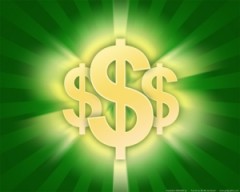
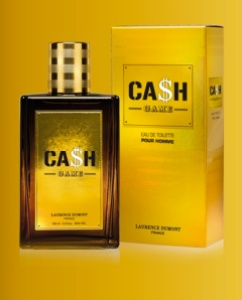
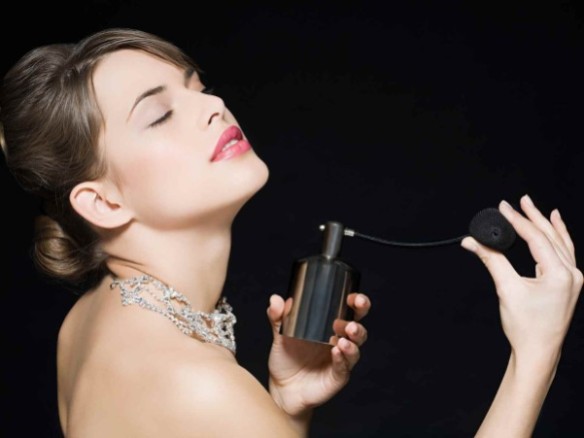


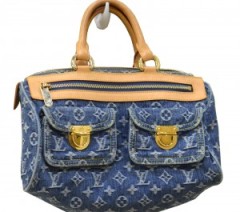




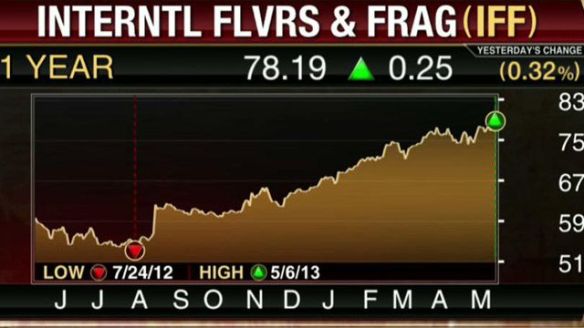



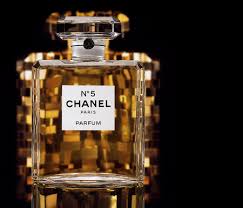
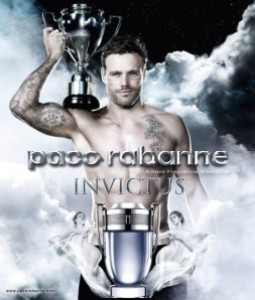




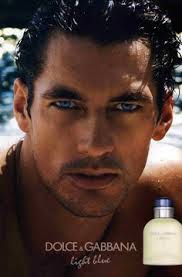
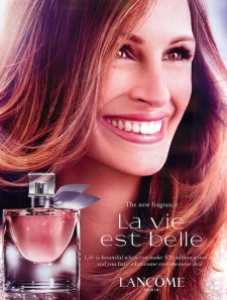
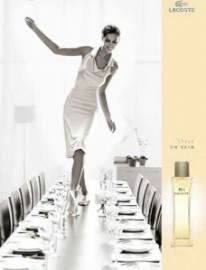


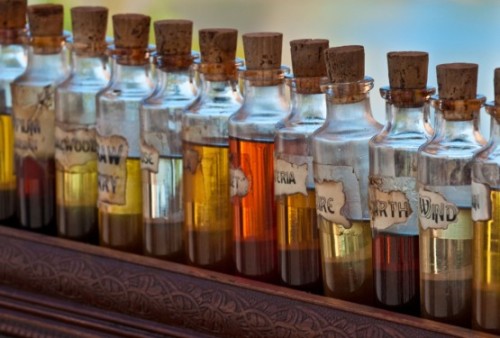

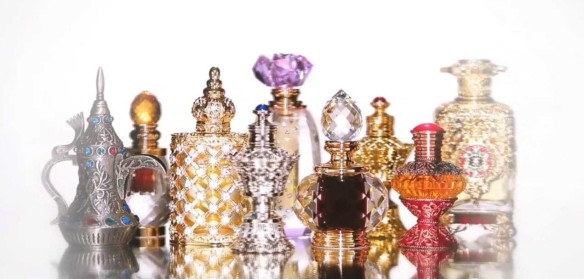






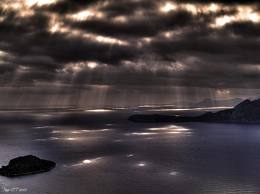
I love your fragrance industry posts Kafka. I’d never read about such things elsewhere, but you wrap them up nicely. As far as the fatwa goes, even though it doesn’t speak against the use of fragrances, it is beyond silly to take an Islamic prohibition against CONSUMING intoxicating beverages and suggest that it applies to external application of ethanol/isopropyl alcohol/etc. Just my bias, but I have to wonder if these maroons even know the difference between the “alcohol” that you drink and the chemical classes of alcohol.
I actually read the Fatwa differently than you did. I read the Grand Mufti’s edict to mean that he agreed with your point, and was telling his more conservative followers not to be so silly or take such a narrow view of the Koran. Their approach, in turn, seemed in line with those of very strict interpretationalists in any Western world, people who may take the views of the Bible too literally and too far. In essence, the Grand Mufti was saying, “don’t think you’re be violating Allah’s word if you put alcohol-based perfume on your skin, because that is not the sort of ingesting that was meant. So, go ahead and wear perfume, you silly people!”
What struck me about the whole edict though was the fact that such a pronouncement was even made by someone so important. It would be akin to one of the Vatican cardinals making an official announcements that Catholics should feel free of guilt if they wore perfume. I mean, this chap is a BIG deal, and certainly comparable to a Catholic Cardinal. So, to have an official edict on the subject of perfume is…!!!!
Furthermore, that just goes to show *WHAT* a big deal perfume is in that part of the world, what a serious part of the culture and daily life, for such a powerful man to want to reassure some of the more conservative Muslims that they can and should wear it! Not just the traditional oil-based scents put out by local companies, but the more “modern” alcohol-based creations from Western companies.
If you really think about the Fatwa in that overall context, it seems pretty astonishing, all in all. At least, it did to me. 🙂
PS — I’m so, so glad you’ve enjoyed the posts, as I know that it’s really NOT what most people look for on a perfume blog and I also know the numbers, detail, length or financial aspect of it can seem most off-putting. It is something that *I* am interested in, but I certainly never expect anyone else to be. For me, though, it is a useful narrative context in which to view the actions of companies in other areas, whether it is the sort of fragrances that they put out, or the power of Givaudan et al, etc. Anyway, I’m really happy to hear that someone enjoyed it. 🙂
Never heard of Invictus, as in the perfume! How was the launch?
I think you are right about Asia unless the teenage market can be harnessed by the marketing tentacles of the perfume industry. I think that a P.A. turnover of 46 billion is significant in a world largely at peace. Peace, Love and Perfume to you Kafka.
Invictus seems to have launched with some fanfare, due to the ad, the cost of it, and the rest, but that is only the vaguest impression that I have. I don’t follow commercial scents as you know, let alone the latest male EDT from Paco Rabanne, and none of the groups that I occasionally browse really focus on those sorts of things either. The most I recall was brief talk some months back about the ad. Still, I think the perfume is doing very, very well, judging by the numbers in a few countries. Paco Rabanne’s One Million certainly was a HUGE hit, so I expect his Invictus to do rather well as well.
Re. Asia, I think that’s a brilliant point, Jordan. 🙂 The teenage market will be the key in terms of harnessing their interest to change around the cultural hesitancy or disinterest. I think you’re absolutely correct! The thing is, when I was in China back in ’08, I remember TONS of ads done by Brad Pitt and other big Hollywood stars for various things, but none of that seems to have much effect in carrying over to actual sales. Six years have gone by since the time I was there, and the only solid numbers in Asia are for the traditional fashion, luxury, and leather goods. If Brad Pitt, Justin Bieber, Britney and the rest haven’t already harnessed the interest of the youth in perfumery by this point, then it shows it’s going to take a LOT more heavy work by perfume companies to really break through.
Splendid review!, You say that your not a “numbers driven person”, maybe that´s why you put the numbers in a readible way. Thanks.
Awww, I’m so glad. Thank you, Armando. I really AM utterly phobic when it comes to numbers and technical finance mumbo jumbo. I remember a sibling once trying to explain Derivatives and Compound Derivatives to me. My eyes glazed over, everything turned into white noise, and my whole mind soon shut down entirely. *grin* The fact that you find all this readable and not too painful means a lot to me! 🙂
Pingback: The U.S. Fragrance Industry: Sales Figures, Popular Fragrances & Market Changes | Kafkaesque
Have you heard about Brazil? It should be mentioned since it ranks 1st place in fragrance consumption worldwide, don´t you think?
Yes, I have heard of Brazil. However, I came across nothing that states it ranks #1 in worldwide fragrance consumption. Perhaps that is because I don’t read the language. Nor was this intended to be examine every big perfume consuming country. In case you hadn’t noticed, I did not cover Russia, and nowhere in Latin America either.
Perhaps that is because I am not a marketing or financial site. I am a perfume reviewer who occasionally ventures to cover something different because it interests me. NOT because I am required to do so. It also helps if the subject is covered in English and, again, I have seen nothing discussing the details of the Brazilian perfume market in English, what perfumes they like, or how consumption is supposedly #1 in the world. I’m sure some sources are out there, but I have not seen them because, if I may repeat, I am not required to cover every country, no matter how big. I am not claiming to be a financial research site, and it should be obvious that not everything can be covered in one piece.
The rudeness of your tone is interesting. Since you are so very concerned about all this, I suggest you go spend days to heavily research every part of the Brazilian perfume industry, then write about it in English with extensive financial sources that are also in English. Perhaps that will fill the void that you perceive and are so angry about, and will thereby ensure that others pick it up. Have a good day.
Sorry if my question sound rudness to you, it was not my intention. I already did an extensive article about Brazil for BW Confidential magazine last november, in english by the way. In Brazil I am also responsible for several books and publications about perfume where I am the curator of a perfume museum. Would be glad to contribute with you in some cultural and economic aspects if needed.
It came across as extremely rude and aggressive. And, I repeat, there is no way that any one article on a blog can cover every country in proper detail. I left out Russia which is extremely important, did not talk about China or Japan this time around, skipped Latin America (though I briefly touched on Brazil or Mexico in an earlier piece), and covered what interested me. So, yes, that would include a small country like Spain, and a large emerging one like India even though it doesn’t have an established perfume culture. I write about what interests ME, and try to do my best within those parameters.
Not even marketing sites can cover every country without it being ridiculously long in length. And at almost 7,000 words for this single post alone, I far exceeded what is normal for any blog. To expect a blogger to cover every possible, big perfume-using country in the world in a single piece is wholly unreasonable, in my opinion. Especially as this is not something I am paid to do, unlike you, who undoubtedly ARE being paid for your work. I receive nothing for all my research, time, work or effort — and I don’t expect it — because, again, I do what interests me, for me.
That said, I would like to examine the situation in Latin America and Mexico as a whole one day. To that end, I may contact you when I do so, if I have your permission, because I am very much interested and would be in dire need of your expertise in English.
However, this is a perfume reviewing site, not a marketing, research, or financial site. I analyze perfumes, not the markets or the industry, and the vast majority of my readers would not be happy if this turned into an economic forum. As it is, I have badly strained their patience with these two pieces, and the earlier ones.
I love these posts – they are so, so thorough and fascinating, but it’s not something I’d typically look up on my own. So thank you for taking what I’m sure was a tremendous amount of time for such a conclusive write-up of the state of the fragrance industry. Always fascinating to see what ranks as popular, because so many of them I’ve never smelled before (or at least, not knowingly).
LOL at the “I’ve never smelled [them] before… at least, not knowingly.” Something about that made me really laugh.
I’m glad you enjoyed the piece. It definitely entailed a substantial amount of research, such that I’m glad these sorts of figures aren’t released every month. (If they were, I would certainly run away!) 😉
LOL! I realized after I wrote it that it sounded a bit, erm, bitchy and haughty – but I actually didn’t mean it that way! Although knowing what the public prefers (aquatic, light, fresh scents) these days, I’m not particularly keen to try them anyway, so I’m sure I still won’t seek them out. I think I tried Allure or Bleu de Chanel once (not sure what iteration) and it was…uh, very not me. Trying to be diplomatic in my judgment of it! 🙂
I think I’d be running too if these figures were released monthly! Talk about overwhelming! But thank you for taking one for the team and sharing it with us after you do all the grunt work.
I’m sort of surprised Shalimar is still popular. Not sure why it surprises me, but it does. I guess it just seems sort of rich for what people prefer now. Although I’m sure French tastes are different than American tastes, and they probably shy away less from heavier scents since perfume is very much part of the culture where, while it really isn’t in the US.
I’m more surprised by the popularity of Chanel No. 5 as it a much more…. er…. difficult scent, I think, given all the aldehydes. I think the myth and legend goes a long way with that one. And the massive amount of money they’re always spending on ads for it.
Without either the mystique or the campaign dollars, I doubt it would be as popular as it is, because I suspect all the younger generation with their Flowerbombs or Mademoiselle Coco would find it to be quite “old lady-ish.” Shalimar may be rich in body and depth, but it seems an easier scent to me than Chanel No. 5.
Then again, I’m someone who can get deeply traumatized by aldehydes, so there is a lot of bias speaking there! *grin*
I definitely think your aldehyde intolerance is talking! 😛 I like Shalimar, but it has a strange element to it (that I can’t really describe) that surprises me it would appeal to a modern nose. I’ve not smelled the modern formulation of No. 5, but I do like the vintage EDC I have of it. On me, the aldehydes aren’t so pronounced – though they are certainly there. But for me, it’s nothing to the extent they are present in No. 22! I feel confident they’ve probably toned down the muskiness in current formulations; if not due to restrictions then due to more modern appeal. But I do think you’re right – I think the legend of No. 5 goes a long way in explaining it’s enduring popularity. It’s hardly the most exciting or interesting scent out there, but for so long it was heralded as a scent of glamour, sophistication, refinement, etc. and even young people are aware of the legend of No. 5. I’ve long found it odd that Chanel pumps so much money for ads into No. 5. I mean, I guess that’s part of the reason for it’s popularity, but I thought being nearly 100 years old would be enough to propel its enduring success! Although perhaps promotion for No. 5 benefits the Chanel brand of fragrances as a whole, but No. 5 will speak most directly to customers since everyone has heard of it. Still, it would be interesting to be a fly on the wall of their marketing meetings.
Definitely my aldehyde phobia talking. And you’re right, what one would give to eavesdrop on those marketing meetings. I suspect the very age of Chanel No. 5 is why they have to use ads to make it seem young and approachable, as opposed to “that ancient perfume that your grandma wore.” Putting Nicole Kidman or Brad Pitt in the ads makes its appeal seem as if it still endures. The core Chanel base will have heard of it, but would a young sales assistant in Topeka Kansas think it could be HER scent as well without the glamour of Nicole Kidman? Maybe not as much.
Who knows, it’s all speculation on our part, but what interested me is that Coco Mademoiselle seems poised to take over the leadership role from Chanel No. 5, and there are hardly any ads for that one except around Christmas!
My (unscientific, unfounded) theory is that they advertise for No. 5 because EVERYONE knows it but it gets people thinking of Chanel. You’d have to live under a rock in a Siberian cave to not know of No. 5, even if only abstractly. Then, if the commercials did their jobs, when younger girls come to the Chanel counter they sell them on Mademoiselle as the younger, hipper scent. I don’t know that that’s the case at all – I think your theory is equally reasonable. They have people like Kidman, Pitt (?!) advertising because they want people to forget their 90 year old grandma wore it for 60 years! 😛 I think, in general, a big part of the reason designer scents do so well (aside from affordability and mass appeal) is that they allow people to have a Chanel, Prada, Dior item without completely demolishing their bank account.
Which brings me to another question, and one I’m sure we will never, ever know the true answer to – but I wonder what the profit margin is on a bottle of designer perfume? I mean, the ingredients are incredibly cheap, and I’m sure the packaging is too especially on the scale of production in which they operate. But they also spend a lot on advertising, which niche really doesn’t. And they certainly aren’t reinventing the wheel, scent-wise, so I don’t think they are spending a ton on developing new scents. Perhaps I’m wrong on that point, but I’m truly curious.
Pingback: Perfume News: 2013 Fragrance Sales Figures, Revenue & Fragrance Markets | Kafkaesque
Pingback: Brazil's Massive Fragrance Market - Kafkaesque
Had a great time reading this. Thank you
You’re very welcome. I’m glad you found it interesting.
This is a fascinating fascinating feature, thank you for going into so much detail
You’re very welcome. I’m glad that you found the piece interesting. 🙂
Thank you for this wonderful, informative piece!! A fantastic work. It is posited that the global fragrance industry is worth $28 billion, according to a 2012 report. Do you have a source for this report? I have been finding figures that contradict each other everywhere. For example, IFRA North America lists the value between $8 to $10 billion, which seems very low. I’m wondering if their data is old.
It sounds to me as though IFRA North America is only considering the North American market, not the global one. The global industry is reported at $28 billion, with one company’s Wiki-Invest page putting the overall market cap at something like $36 billion. You can look for further sources, sites, and details here:
https://kafkaesqueblog.com/2013/08/24/perfume-news-2013-fragrance-sales-figures-revenue-fragrance-markets/
That talks about the 2012 NPD report which I use as one of my sources. You may also find further US-based information at: https://kafkaesqueblog.com/2014/02/19/the-u-s-fragrance-industry-sales-figures-popular-fragrances-market-changes/
Hope that helps.
An interesting read indeed. I love the depth of the post and the critical discourse that follow.
Thank you. I’m glad you found it interesting. 🙂
Hello Kafkaesque,
Great review of the market … but i have a question how do u see the role of the laboratories (Givaudan, Firmenich…) now .. do you know any structural changes ? the thing is ..lot of perfume houses now have their “noses” in-house … what is going to be the role of Givaudan in the future … being a supplier of beautiful raw materials … do u see any other structural change?
Hello, Niang, welcome to the blog. I don’t know of any structural changes, though I’m not quite sure what precisely you mean by that phrase. I don’t see any major shift in the prominence of the aromachemical companies except perhaps to grow stronger as the 2015 EU restrictions kick in and even further limit the role of natural essences. As all the focus is on emerging markets, the big companies will probably grow even more profitable.
As for the issue of in-house noses, I don’t see the situation as you do. Only a handful of the big designer houses have in-house perfumers. Namely, Chanel, Dior, and Hermès. L’Oreal’s YSL doesn’t, and goes with different noses for each release. I think Armani and Valentino may do the same, though their share of the market is minuscule. Chanel, Dior, and Hermès are outliers, though. The big niche houses continue to use a stable of perfumers from the aromachemical companies. Tom Ford uses Givaudan noses. Kilian uses Calice Becker from Givaudan and Sidonie Lancesseur works at Robertet, I think. Amouage employs mostly Robertet noses, as does LM Parfums. Smaller houses vary who they use depending on the brand. Most use perfumers from across the spectrum of the big aromachemical houses. Arquiste primarily uses Givaudan’s Rodrigo Flores-Roux. Puredistance works a lot with Antoine Lie who used to be at Givaudan, though I don’t know where he is now. I could go on.
As you can see from that list, true niche perfume brands (as opposed to a tiny trio of mainstream designer houses) don’t work in-house at all. Many rely on the stable of talent from one of the big aromachemical houses. Only a few niche houses are owned and run by actual perfumers who make their own stuff. That is not at all representative of trends within the larger industry, but neither is the other end of the spectrum with happens at Dior, Chanel and Hermès. In my opinion, Givaudan, Robertet, and the like will continue to not only supply the raw materials to the vast majority of the industry (the large middle portion of the spectrum), but also provide the noses/perfumers to use those products in the actual creation process.
I hope that helps to answer your questions a little.
Pingback: The U.S. Fragrance Industry: Sales Figures, Popular Fragrances & Market Changes - Kafkaesque
Thanks a lot for your report. I ended up in your blog ahead of my CIMA managerial case study in August where the case is on a fictional perfume manufacturing company. Your report gave me a good perspective of the global perfume industry despite less financial analysis. Thanks a lot again.
You’re very welcome. I’m glad I could help a little.
Hello Kafkaesque,
What is your opinion about the future of alcohol free perfume industry?
PS: I also enjoyed reading the blog, very good article.
That’s one heck of a well researched article, something i have bookmarked to come back to again and again!!
Pingback: China & Japan's Fragrance Markets & Culture - Kafkaesque
I have been blessed by your insights on perfume, culture and business of the perfume companies.
What do you think is the ranking of niche perfume currently?
Are the 3 top spots also in order of Chanel, Dior, Guerlain?
CHANEL LES EXCLUSIFS
DIOR PRIVEE
GUERLAIN EXCLUSIVES
What about new comers as below? When will Tom Ford claim top 3 spot?
TOM FORD PRIVATE BLEND
HERMES HERMESSENCE
HUGO BOSS: THE COLLECTION
PRADA LES INFUSIONS
DOLCE & GABBANA DG VELVET COLLECTION
VAN CLEEF & ARPELS COLLECTION EXTRAORDINAIRE
Others?
I am reading your blog for the first time and i absolutely love it. I am a fragrance fanatic myself…